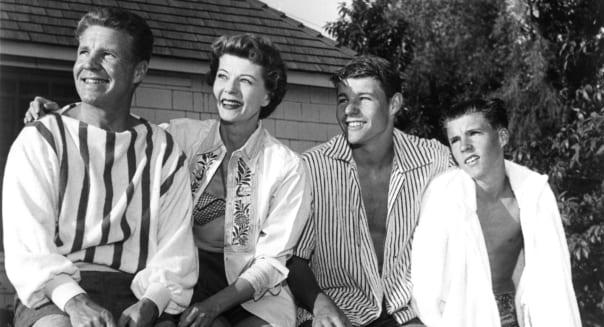Are You Really Middle Class Anymore?

Consider a classic-yet-hypothetical photo of grandpa in his work suit and hat, grandma hugging the capped and gowned college grad in front of their house and car. These are four of the five pillars of the American dream: a good job, a house, a car and a college degree. (The fifth is retirement savings.) How are you doing today compared to that photo from the era that spawned the concept of a middle class?
"Middle class" is a term much bandied about by politicians, the media and economists, though its tough to find agreement on what it means. In the 2012 election, Mitt Romney said the upper income limit to be considered a middle class family should be $250,000 a year. On a White House page for the Middle Class Task Force, Vice President Joe Biden said, "There was a bargain in place for the last 50 years that if you worked hard, you played by the rules, you helped increase productivity in America, you got a piece of the action. You benefited." Have you?
When a recent Pew Charitable Trust survey reported that the percentage of Americans identifying themselves as middle class tumbled from 53 percent in 2008 to 44 percent in 2014, it unsettled markets. The Census Bureau defines middle class as those families making between $40,000 and $80,000 a year. The median U.S. annual household income is $52,100 as of a 2013 census report. States' average income varies, with Maryland at more than $67,000 and Mississippi at $39,078. Depending on where you live, a middle class lifestyle could be a snap or a struggle.
You May Still Be Middle Class If You ...
Own a house. The 2011 U.S. home median price is $212,300, according to the U.S. Census, compared to $22,200 in 1967. In 1967, when the median annual household income was $7,200, that median house cost about three times the median household income. Now, it's slightly more than four times of today's median annual income.
Have a job ... with benefits. Fewer people do. Union membership has sagged for decades, and fell to a 97-year low in 2013, when only 11.5 percent of Americans were union members. Those good union jobs that plunked people firmly in the middle class hardly exist anymore. As for benefits, there is rarely a day anymore when another large corporation doesn't announce cuts. The yearly unemployment index was 3.5 percent in 1969 and 5.8 percent in 2008. That doesn't include those who have permanently given up looking for work.
Have a car.Car sales fell from 18 million cars annually pre-recession to 9 million by 2009. Car ownership per capita is the same as it was in 1970, one car per two persons. The cost of a car as a percentage of annual household income has soared. In 1965, a Chevrolet Malibu required 7 percent of average annual income, and now one takes around 50 percent.
Have enough college cash. In 1960, tuition, room and board, fees and miscellaneous costs at the University of Pennsylvania ran to $2,500 per year. Adjusted for inflation, that figure translates to $19,402 today. But that Ivy League school now costs undergrads more than $50,000 a year. Its a pattern mirrored at colleges all over the country. Not since 1985 have ordinary students been able to pay their way through college solely by working summers and at part-time jobs. The student debt burden has never been higher, with an average debt load of $29,000 for the recent college grad.
Have savings. As for retirement savings, (the money in the bank and pension you can't see in that hypothetical old photo), the latest annual Wells Fargo Middle Class Retirement survey paints a disturbing picture of middle-class Americans: 42 percent said they can't pay bills and also save for their golden years. Even sadder, 37 percent said they expect they'll have to work until they die.
Depressing, no? Mike Todd, showbiz impresario and one of Elizabeth Taylor's husbands, once said, "I've been broke, but I've never been poor." Yet a greater percentage of Americans are self-identifying as lower class or lower middle class today, according to the Pew survey, which saw the numbers in those categories rise from 25 percent in 2008 to 40 percent in 2014.
What to do? Save your money, realize no job is guaranteed anymore, keep spending down. And remember that being middle class is just a number.

